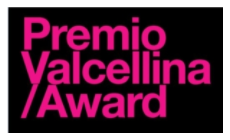Shirley Steenberg
CANADA | 2019SECTION OF DRESS: My Story, my Culture, our Country, Strong and Free
Shirley an Inuit from northern Canada creates a poignant work depicting important elements of her unique identity.
My name is Shirley Steenberg, I’m originally from a small town called Tuktoyaktuk, Northwest Territories, Canada. I’m Inuvialuk, (also known as Inuit) an indigenous group of people that live along the coast of the Beaufort Sea. I was invited to participate in a 10 year art project created by Kirstie Macleod of the UK, an embroidery of a Red Dress with 130 embroiderers each sewed a panel from 27 different countries around the world and sewn together to create a magnificent brilliant Red Dress. For my panel I chose maple leaf, Indigenous medicine wheel, polar bear, inukshuk and “Strong and Free” from our Canadian National anthem.
I have chosen the Medicine Wheel to be the center of my panel of the red dress, sometimes known as the Sacred Hoop, it has been used by generations of various Native American groups for health and healing. It embodies the Four Directions (north, south, east and west), as well as Father Sky, Mother Earth, and Spirit Tree—all of which symbolize dimensions of health and the cycles of life.
The stitching in the wheel symbolizes the sun and sunflower in yellow, one of my favorite flowers. The three leaves represents my 3 daughters Crystal, Amber and Ruby also known as my ‘Gem girls’, they are my strength, love, and purpose in life.
I have our Canadian maple leaf on the panel, it represents our country of many nationalities, “Strong and Free” is from our Canadian national anthem.
In the medicine wheel I have the polar bear, a sacred animal of our North, they are vulnerable because of our melting ice in the sea, and their population are slowly decreasing. There is a special story about the polar bear spirit, my great-great-grandfather William Mangilaluk who was the chief and founder of Tuktoyaktuk believed he had the spirit of the polar bear and when he passed away his name-sake is passed down to our relatives who choose to name their son after Mangilaluk and we believe in carrying on their spirit names generations to generations. It is also the logo I created for my school in Tuktoyaktuk, NT, Canada.
At the very bottom of the panel I have the Inukshuk, they were used by us Inuvialuit as directional markers on the land to tell others traveling that we have been there. It is made of tundra rocks in the shape of a person and it signifies safety, direction of our next journey, hope and friendship. ... Inuksuit (plural) have been transformed into a symbol of hope and friendship that transcends borders to reach people all over the world.
I’m one of many nationalities and cultures of the world, thru one red dress we come together to share cherished beliefs and cultures, tell our stories, we come in unity, love, peace, respect, expression, healing, and empowerment. I am Inuvialuk, strong and resilient.
If you would like to contact Shirley for commissions, please contact Kirstie on: reddressembroidery@gmail.com
OUR SUPPORTERS
A huge thank you to all who have given their time, energy, enthusiasm, advice, experience and support to The Red Dress project over the years.
In addition to the organisations below, funding has been gratefully received from a number of private donations and via three crowdfunding campaigns in 2020, 2022 and 2024.
In addition to the organisations below, funding has been gratefully received from a number of private donations and via three crowdfunding campaigns in 2020, 2022 and 2024.












"
"